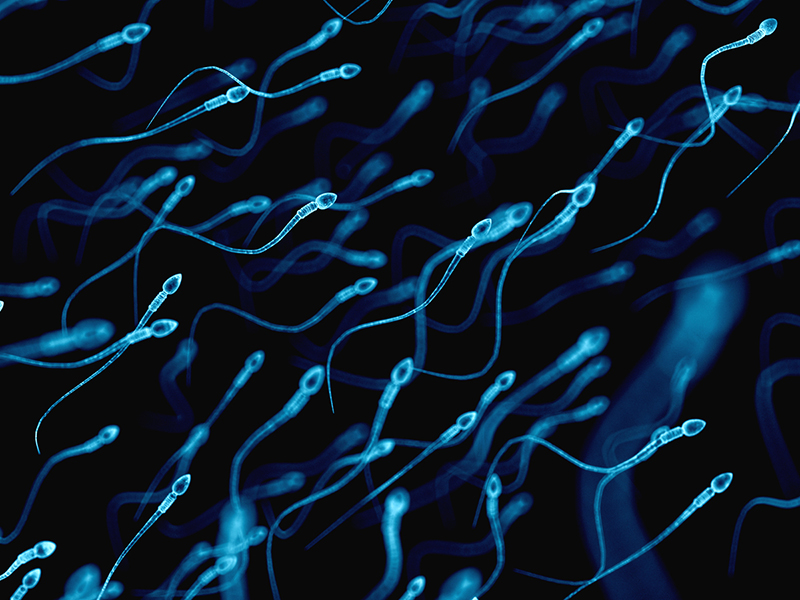
Researchers funded by the National Institutes of Health have discovered a gene that could serve as a target for a new, non-hormonal contraceptive. The gene, arrestin domain containing 5 (ARRDC5) is present in several mammalian species and controls the last step in sperm maturation. Deactivating the gene results in lower sperm count and sperm with impaired movement that are incapable of fertilizing an egg—without any apparent ill effects elsewhere in the body.
The study was conducted by Jon M. Oatley, Ph.D., and colleagues at Washington State University. It appears in Nature Communications. NIH funding was provided by the Eunice Kennedy Shriver National Institute of Child Health and Human Development.
Background
Sperm, which have only one full set of chromosomes, are formed from cells in the testes after a series of steps. If any of these steps are not completed properly, sperm may fail to function normally.
A previous study found that overactivity and inactivation of another gene in the arrestin domain containing family, ARRDC4, found in the male reproductive tract, resulted in sperm with less ability to move and less ability to fertilize an egg.
In the current study, researchers analyzed testicular tissue from mice, cattle, and pigs for genes expressed in these species. They found that another gene in the same gene family, ARRDC5, was expressed in the testes of these species. Other studies have found that ARRDC5 is also expressed in human testes.
The authors conducted a series of experiments to determine the gene’s function.
Results
In mice, cattle, and pigs, the gene was expressed only in the testicles. Similarly, they found the gene was not expressed in mice lacking the germ cells that give rise to sperm, indicating that this gene is only expressed in the germ cells.
Next, the researchers developed a strain of mice lacking the ARRDC5 gene and found that while the animals mated normally, the females they were paired with did not become pregnant.
Further examination showed that the animals’ testes developed normally and produced sperm. However, mice lacking the gene produced 28% less sperm, and the sperm that were produced moved 2.8 times slower than those of normal mice. In addition, about 98% of their sperm were misshapen, indicating that they did not develop properly to carry out functions like movement, swimming, and fertilization.
Similarly, only a small proportion of the animals’ sperm could undergo capacitation—the process by which sperm become capable of swimming through the female reproductive tract. Additionally, these sperm were unable to undergo the acrosome reaction—the process that is essential for the sperm to fuse to the egg.
Significance
“The study identifies this gene for the first time as being expressed only in testicular tissue, and it’s expressed by multiple mammalian species,” Dr. Oatley said. “When this gene is inactivated or inhibited in males, they make sperm that cannot fertilize an egg, and that’s a prime target for male contraceptive development.”
Next Steps
The researchers concluded that developing a drug that keeps the ARRDC5 protein from being made or from functioning might provide an option for developing a reversible male contraceptive.
This approach does not appear to interfere with testosterone production and so would not block the hormone’s other functions, such as regulating sex drive, building bone mass, and muscle strength. In theory, discontinuing such a drug would restore normal sperm production and fertility.
Reference
Giassetti, MI, et al. ARRDC5 expression is conserved in mammalian testes and required for normal sperm morphogenesis. Nature Communications. 2023.

 BACK TO TOP
BACK TO TOP